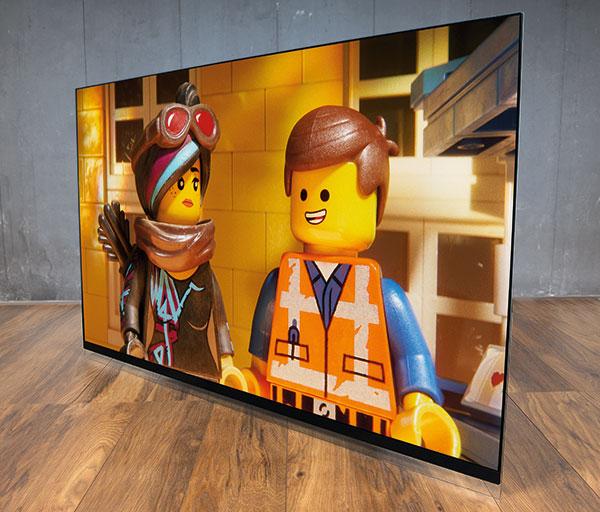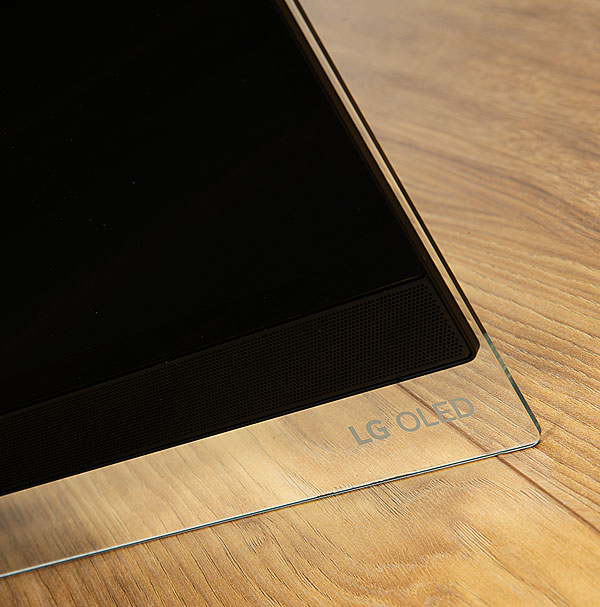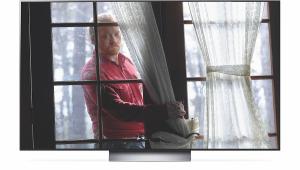LG OLED65E9PLA OLED 4K HDR TV review

 LG's fine-tuned OLED impresses Steve May – even with an obvious spec-sheet omission
LG's fine-tuned OLED impresses Steve May – even with an obvious spec-sheet omission
The LG E9 is an exceptional 4K flatscreen. Available in 65in (as tested here) and 55in guises, it's the top-ranked integrated OLED in LG's 2019 lineup, positioned above the C9 and B9. Burdened with glorious functionality, it employs the second-generation Alpha9 intelligent picture processor and offers support for high-frame-rate 4K sources via HDMI 2.1. Inevitably, there's a caveat. But let's not get ahead of ourselves.
Predictably thin, with a nigh-on invisible rim holding its glass in place, the E9 has catwalk good looks. And function supports form.
The forward-facing sound system, much like the OLED panel itself, is impressively thin. Beneath the driver array is a transparent perspex lip which not only gives the illusion that the set is floating, but cleverly helps stabilize it, with the aid of a heavy pedestal counterweight hidden behind the screen.
All four of its HDMI inputs are freshly-baked 2.1, which in terms of future-proofing could be a big deal. On last year's LG OLED screens, high-frame-rate (HFR) support was only available for USB content; with the adoption of HDMI 2.1, HFR 4K support, along with eARC, VRR (Variable Frame Rate) and ALLM (Auto Low Latency Mode) are now standard. Not essential upgrades, but good news for serious gamers.
Additional connectivity includes a trio of USBs, Ethernet, an optical digital audio output and a mini headphone jack (which I doubt will ever get used). Wi-Fi and Bluetooth are options for streamers.
LG has tidied up the interface of its WebOS smart platform for 2019, and the result is a cleaner user experience. Not only are there fewer apps (down from 35 to 16) shown in the ThinQ AI launcher bar, it also occupies less screen space. Use the Intelligent Edit feature to better customise onscreen options to suit your viewing habits. The launcher bar still offers access to various streaming apps, including NOW TV, Netflix, Amazon Prime Video, Rakuten TV, BBC iPlayer, ITV Hub,
All 4 and Demand 5 – the latter four carried via the TV's implementation of a Freeview Play tuner. A secondary preview bar interrogates streaming apps to provide a list of selectable content.
LG's ThinQ AI voice control is also smarter this time around, in that it now understands context so interaction becomes more conversational. Google Assistant is also built-in, and there's compatibility with Amazon Alexa and Apple AirPlay 2.
Familiar Feel
Unsurprisingly, given the set's premium aspirations, its image quality is superb. The E9 offers pin-sharp detail and vibrant colour fidelity, with reassuringly deep black levels and copious shadow detail – attributes we know and love from OLED.
Out of the box, the default picture mode is Eco; while undoubtedly worthy, it's not recommended and should be changed to one of the other presets. The selection includes Cinema, Sports, Game, HDR Effect, Vivid and Standard. Most users will gravitate to the latter, for good reason. The colour temperature here and overall brightness level is ideal for everyday viewing.

Included as part of this preset bouquet is Deep Learning AI picture management, which allows the panel to better display shadow detail by reacting to viewing light levels and adjusting tone mapping accordingly. This algorithm has, says LG, been crafted from a database of millions of data points covering source recognition and picture optimisation. Such content and quality analysis represents a significant evolution in picture processing technology, and I found no obvious reason to deselect this when the screen is used in a regular living room environment.
LG's menu system remains complicated and a tad confusing, but there's not a lot of tweaking necessary; just keep noise reduction and smooth gradation settings low, unless you have low-quality sources that demand some help.
Standard Bearer
Fed an HDR10 source (most 4K Blu-rays), picture presets switch to Cinema Home, Cinema, Game, Technicolor, Vivid and Standard. Of those, the Technicolor and Cinema options are too dull to enjoy; there's a colour cast which really doesn't celebrate the benefits of the OLED panel. Cinema Home, which has increased mid-tone luminance, and Standard both provide a more satisfying viewing experience. Note that the preset choice narrows again when Dolby Vision content is detected.
The E9's HDR performance is largely in line with what we expect from a premium OLED display. The panel burns brighter with a smaller 5 per cent HDR test window than a 10 per cent one, which bodes well for its real-world HDR performance, as specular highlights are generally fleeting and small. HDR highlights peaked at 843 nits in a 5 per cent window, and on average managed around 800 nits. This is virtually identical to the performance of LG's 2018 OLED displays.
What you really need to know is that the opening space battle in Star Wars: The Last Jedi (Ultra HD Blu-ray) looks gloriously dynamic, with its fiery explosions juxtaposed against deep, black space. There's visceral punch to this LG's HDR imagery.
 |
Home Cinema Choice #351 is on sale now, featuring: Samsung S95D flagship OLED TV; Ascendo loudspeakers; Pioneer VSA-LX805 AV receiver; UST projector roundup; 2024’s summer movies; Conan 4K; and more
|

















































